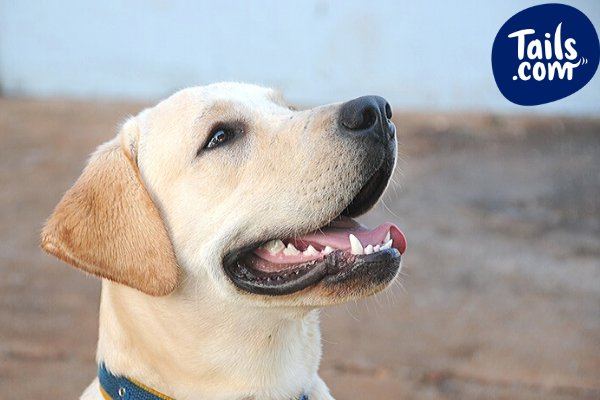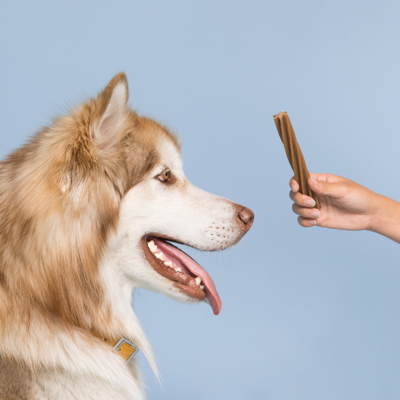Unfortunately for our pooches, gum disease in dogs is a common condition. But it’s easily prevented by keeping your pup’s dental health in check. Because just like us, our dog’s teeth are vulnerable to plaque and tartar build up. Without regular brushing your pooch can experience a range of dental problems, causing pain and eventually tooth loss.
What causes gum disease in dogs?
If your dog’s teeth aren’t kept clean, bacteria and food will accumulate along the gumline. When that happens, plaque and tartar will form causing irritation and inflammation to the gums. This can lead to early stages of periodontal disease, also known as gingivitis.
If gingivitis in dogs is left untreated, the disease will develop to stage two, with 25 percent separation of the teeth from the gums. Stage three involves 25-30 percent attachment loss. While stage four is considered advanced periodontitis with more than 50 percent attachment loss. This is where periodontal disease in dogs becomes severe, and the gum tissue often recedes exposing the roots of the teeth.
But there are other causes of periodontal disease in dogs. Certain breeds are more prone to the condition simply due to the shape of their mouths. Breeds such as Yorkshire Terriers, Pugs, Shih Tzus and Whippets have mouths that are naturally cramped, compressed or narrow, which can cause dental problems. Your dog’s age can also contribute to the onset of the condition as their teeth and gums inevitably degrade over time. Related blog:Your dog’s dental health
Does my dog have gum disease?
It’s a good idea to check your dog’s teeth regularly so you can spot any problems before they evolve. Since dogs are masters of hiding their pain, they may appear normal in themselves even with painful teeth. Here are the signs to watch out for:
- Tartar
- Bad breath
- Loss in appetite or difficulty eating
- Red or inflamed gums
- Dribbling
- Swollen face
- Missing, wobbly or broken teeth
- Pawing at the mouth or face
- Weight loss
How to treat gum disease in dogs
As periodontal disease in dogs develops, the tartar and bacteria build up under the gums causing spaces under the teeth. When this happens the problem is irreversible. The only form of ‘treatment’ is to extract the affected teeth to help your dog feel comfortable again. If there’s a dog gum infection, your vet may also prescribe antibiotics and anti-inflammatory pain relief.
Depending on the stage of your dog’s periodontal disease, your vet may recommend a scale and polish under anaesthetic to remove any plaque and tartar build up. This is a good option if your dog has gingivitis and early stage periodontal disease. This can help prevent further deterioration to the teeth and gums.
How to prevent gum disease in dogs
The best prevention for gum disease in dogs is daily brushing. Regular brushing will help remove plaque along the gumline before it can turn into solid tartar. Dental chews will also go some way towards keeping your pup’s teeth clean. But they should never be a substitute for brushing.
It’s important to check your dog’s teeth regularly and look out for the symptoms we mentioned above. You should also take your dog to the vet for a dental check up every year so you can catch problems before they escalate.



1 thought on “9 Signs of gum disease in dogs”